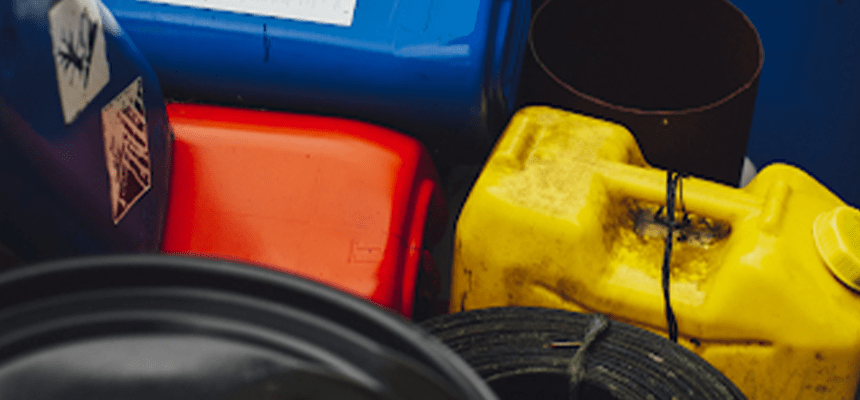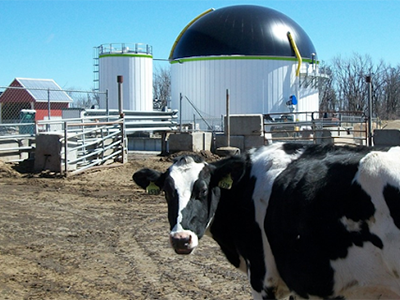Do you ever drive past an abandoned gas station, strip mall or manufacturing site and wonder, why can’t someone make something out of this? These lots have a high possibility of containing hazardous chemicals that can be very dangerous for human health and the environment. Past contamination of these sites is something that must be identified and cleaned before any new development can take place.
These open lots are called Brownfields and are a top priority of the United States EPA. Once decontaminated, a Brownfield has the potential to be remediated and redeveloped into either an open space or a structure that benefits the community.
What is a Brownfield?
A Brownfield is a vacant property that has the potential to contain hazardous substances, pollutants, or contaminants. It is a property that can be reused or redeveloped once more to facilitate urban growth and expansion. Currently, the EPA estimates that there are more than 450,000 Brownfields in the U.S.
The development of these properties is beneficial to the community and protects the environment. Cleaning up these properties can:
- Increase the local tax bases
- Increase job growth
- Makes use of existing infrastructure
- Eliminate the need for the development of undeveloped, open land.
When Brownfields are left untouched, they can pose environmental, legal, and financial burdens on the community. It is typical for these areas to be large industrial complexes, abandoned parking lots, former gas stations, metal plating facilities, and even dry cleaners that are no longer in business. This is not a complete list, as there are many brownfield locations throughout the United States.
Brownfields are known for having a high potential for possible hazardous chemicals. Depending on the history of the site, there can be a wide range of contaminants present. Exposure to these contaminants could be dangerous for human health. The most commonly reported contaminants are as follows:
- Lead - Metal pollutant which originates from paints, pipping, manufacturing, ammunition, and mining
- Petroleum - An oil composed of hydrocarbon compounds that comes from drilling and refining, chemical and plastic production, and fuel.
- Asbestos - Fiber found in rock which comes from mining and processing, insulation, piping, brakes, and fireproofing.
- Polycyclic aromatic hydrocarbons (PAH)s - Product from combustion that originates from coal tar, fireproofing, creosote and brakes.
- Other Metals - From mining and manufacturing practices
- Volatile organic compounds (VOC)s - Man-made chemicals from industry and commercial solvents, paint strippers, degreasers, and dry-cleaning chemicals.
- Polychlorinated Biphenyls (PCB)s - Also man-made chemicals that come from heat and electrical transfer fluids, manufacturing, power plants, paint and caulk, and lubricants.
- Arsenic (As) - A metal pollutant that originates from agriculture, pesticides, and wood preservatives.
Brownfields and Land Revitalization Program
Enacted in 1995 by the EPA, the Brownfields and Land Revitalization Program has changed the way communities address development. The goal of the program is to encourage people to assess and clean up existing lots that may have contaminants from previous development.
The program started with a few pilot projects that the EPA gave small amounts to the state governments to begin. It provided the tools for private and public sectors to sustainably promote brownfield cleanup and use.
In 2018, the EPA reauthorized the program with the Brownfields Utilization, Investment and Local Development (BUILD) Act, introducing brownfield grants. The grants are meant to support brownfield development and fund environmental assessment, cleanup, and job training.
Three Stage Redevelopment
There are three stages of Brownfield redevelopment. Each of the stages requires its own number of requirements and funding. The three stages are as follows:
- Pre-development Stage
- Development
- Managing
In the Pre-development stage, the foundation beginning the project will lay out all of the necessities to be successful. In this phase, developers will have to determine the risk of the project since they are going to invest their money upfront. The conducting of property reviews and environmental assessments take place as well as research on previous uses of the land. Assessing all of the potential toxins and hazardous pollutants beforehand is essential in ensuring that the project is successful. It is very likely that the company or foundation facilitating these efforts will be held liable if any issues arise throughout the following stages. That is why all possible fatal flaws are researched as part of the due diligence analysis.
The Development stage is where all necessary permits and approvals are obtained. These are the land use approvals from local and state governments that allow for construction on the site. The site is cleaned and prepared for the project and the construction begins. The decontamination/cleanup phase is the most sensitive and may result in unexpected higher costs that make the project become financially infeasible. After the construction on the project sites is completed, the project is considered to be completed successfully and ownership and leasing transactions can be finalized. The site will be prepared for the operation of its intended use.
The Management stage occurs when the site is already operating for its planned use. The developer of the property can either hold onto it for the long-term and be responsible for its operation and maintenance or sell it.
What is NY’s Brownfield Cleanup Program?
The Brownfield Cleanup Program (BCP) is meant to incentivize private-sector cleanups of brownfields and to promote the redevelopment of economically blighted communities. The BCP looks to transform brownfields rather than “greenfields” which is land not previously developed or contaminated. Since 2003, the BCP has sparked the cleanup of roughly 500 contaminated sites across the state and incentivized redevelopment. Currently the BCP has identified more than 550 active sites.
Galli Engineering’s Role in Brownfield Redevelopment
Galli Engineering is a company made up of professionals who are experienced in brownfield redevelopment. They perform services to remediate Brownfields and understand the complexity often associated with these sites. They have the ability and skills to integrate all elements of Brownfield redevelopment from site investigation through regulatory compliance. The remediation and the design of engineered construction elements are well-managed and result in an efficient solution.
Galli has employees who are certified under the NYC Mayor’s Office of Environmental Remediation and Environmental Industry Professionals under the NYC VCO and Brownfield Incentive Grants.
Past work Galli Engineering has done in Brownfield remediation includes a project in Long Island City, Queens for G & M Reality called 5 Pointz. They prepared and submitted Brownfield applications by completing the necessary Phase I and Phase II environmental site assessments. Galli Engineering was present at the site for remedial oversite, air monitoring, tracking of contaminated soil shipments, and endpoint sampling. They also completed the remedial work plan and final engineering report for the project.
Galli Engineering understands how to tackle problems and provide efficient and effective solutions for every project. They do not stop in ensuring client satisfaction and quality work done by each of their scientists, engineers, and environmental specialists.








